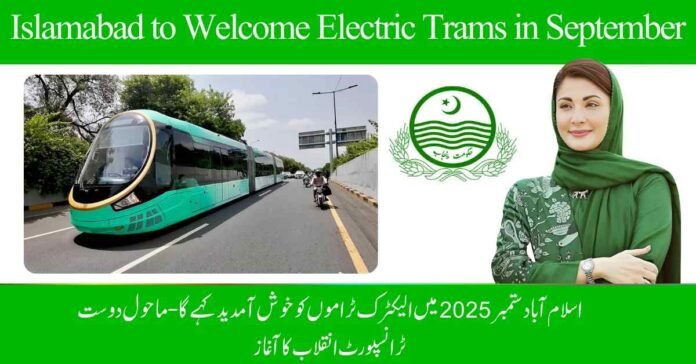Islamabad, often celebrated for its greenery and clean design, is grappling with the same urban headaches seen in major cities: clogged roads, smoggy air, and rising fuel costs. City planners are now looking at an old solution with a modern twist — electric trams — as a way to ease pressure on the capital’s roads and deliver a sustainable transport alternative.
How Trams Work in a Modern City
Unlike buses that weave through traffic, trams run on fixed tracks, powered entirely by electricity rather than fossil fuels. New-generation trams are efficient too:
- Capacity: They can move around 250 passengers at once.
- Charging: A 10-minute charge can power them for nearly 25 kilometers.
- Operation: They glide quietly, producing zero tailpipe emissions.
For a city with steadily growing traffic, that combination makes them a compelling option.
Why Islamabad Can’t Afford to Wait
Every rush hour in Islamabad highlights the urgency of change. Long lines of cars slow movement across major corridors, while vehicle emissions continue to erode air quality. Dependence on petrol and diesel is also driving up the cost of commuting.
Trams offer a three-in-one fix: they move more people in fewer vehicles, cut reliance on fuel imports, and lower the city’s carbon footprint.
Cleaner Air, Quieter Streets
The strongest case for trams lies in their environmental upside. Beyond reducing greenhouse gases, they also:
- Improve air quality by replacing smoke-emitting buses.
- Cut noise pollution in crowded areas.
- Offer the potential to be powered by renewable energy, especially solar — something Islamabad already invests in.
For a city that prides itself on its natural beauty, this shift aligns perfectly with its identity.
A Better Ride for Passengers
Trams aren’t just about the environment — they change the commuting experience:
- Accessibility: Level platforms make boarding easier for seniors, wheelchair users, and parents with strollers.
- Comfort: Smooth, low-vibration travel compared with buses.
- Reliability: Fixed routes mean predictable arrival times.
- Frequency: Services can run throughout the day and night.
In short, they bring predictability and dignity to daily travel.
Investment vs. Payoff
Building tram lines requires serious funding, but experts note that the payoff is long-term:
- Trams last decades longer than buses.
- Higher capacity means more ticket revenue.
- Property near tram lines often rises in value, spurring business and residential growth.
This makes tram projects as much an urban development tool as a transport investment.
Lessons from Abroad
Cities from Dubai to Berlin already run extensive tram systems. In China, trams have become central to managing urban sprawl. Pakistan itself tested the waters with Lahore’s tram project, which now sets the stage for Islamabad to follow suit.
Roadblocks Ahead
The vision isn’t without hurdles. Trams demand high upfront costs, and public buy-in will be critical. Integration with other systems, such as buses and metro bus lines, is also essential. Government–private partnerships and strong awareness campaigns are likely to play a decisive role in overcoming these challenges.
Looking a Decade Ahead
If Islamabad moves forward decisively, the cityscape could look very different in 10 years:
- Sleek electric trams running along wide boulevards.
- Cleaner skies and healthier neighborhoods.
- Reliable, affordable transport reducing the stress of daily commutes.
Such a transformation would not just modernize the capital but also set a benchmark for other Pakistani cities.
Quick Answers
- Will tickets be expensive? No, fares are expected to stay in line with bus pricing.
- How do trams cut pollution? By replacing diesel vehicles with electric power, air quality improves significantly.
- When will they arrive? Plans are in motion, but the timeline depends on government approvals and construction schedules.
Final Word
Electric trams represent more than an infrastructure upgrade — they’re a blueprint for a smarter, greener Islamabad. By investing in this system, the capital could ease its transport woes while positioning itself as a model for sustainable urban growth across Pakistan.

